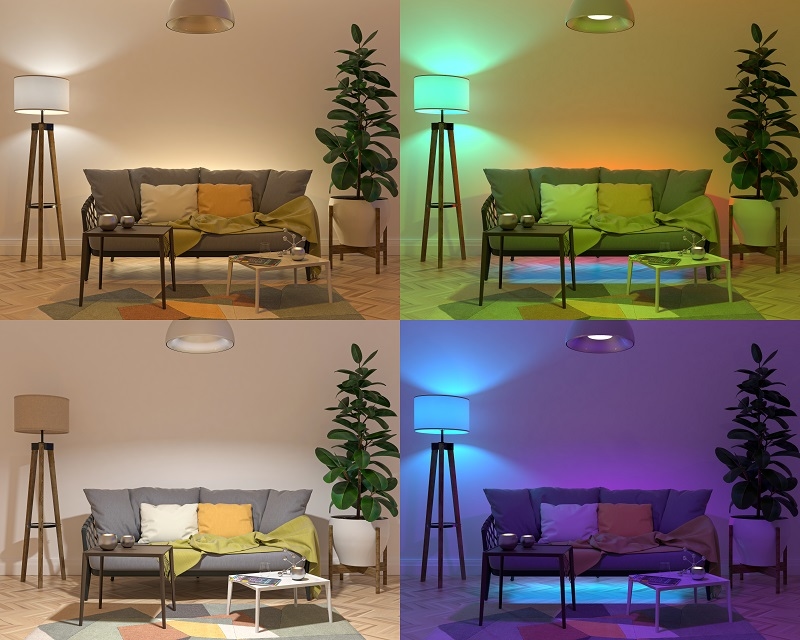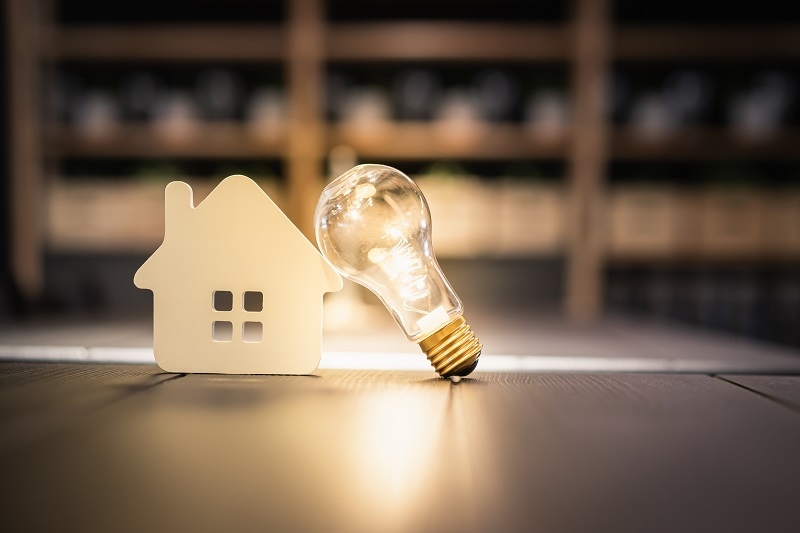DIY Smart Lighting Hacks: Try Automation & Scheduling Tips

DIY smart lighting is one of the maximum low priced and powerful improvements you can make to your private home. With some strategic hacks, you can transform normal lights into a personalized, strength-green, or even mood-boosting revel in. Whether you’re seeking to set up smart bulb schedules, sync lighting fixtures with dawn, integrate with a Hue bridge Zigbee setup, or dive into voice automation lighting fixtures hacks, this guide has you covered.
In this whole blog, we’ll walk you through the way to take manipulate of your lighting surroundings using DIY-friendly equipment and strategies. We’ll discover scheduling, voice control, ambient clever mild scenes, and a way to automate your area to respond to natural mild cycles like sunrise and sunset—all even as making your device as easy and intuitive as possible.
Why DIY Smart Lighting Is Worth It
If you’ve ever fumbled for a light switch with full arms or needed your property to respond extra intuitively to your daily rhythm, DIY smart lighting is the solution. Beyond the cool component, the advantages are practical:
- Energy efficiency: Set schedules so lighting isn't left on all night.
- Convenience: Control every bulb from your phone or with your voice.
- Ambiance: For movie evenings, painting lessons, or dinner parties, create especially creative light scenarios.
- Security: Automatic lights enhance the lifestyle as well as increase protection.
- Customization: To fit your lifestyle, use improved scheduling and sunrise synchronizing.
Let's get started with practical, step-by-step do-it-yourself smart lighting fixtures advice that incorporates voice control, automation, scheduling, and more.
How to Set Up Smart Bulbs Schedules the Right Way
Scheduling is the muse of DIY clever lighting. If you need to awaken lightly, shop for electricity, or upload safety at the same time as visiting, you’ll need to set up clever bulb schedules for specific instances of the day.
Step-by-Step Setup:
- Choose Your Platform: Most clever bulbs join via Wi-Fi, Zigbee, or Bluetooth. Common apps include Philips Hue, Amazon Alexa, Google Home, and Apple HomeKit.
- Use the App to Schedule: Within the app, go to the automation or exercises section. From there, you can set up smart bulb schedules like:
- Wake-up lights at 6:30 AM
- Dim lights at 9:00 PM for bedtime
- Automatically turn off kitchen lights at the hours of darkness
- Link Schedules to Days: You can personalize schedules for weekdays vs. Weekends—ideal for syncing along with your sleep schedule.
- Integrate with Smart Assistants: Link your bulbs to Alexa, Siri, or Google Assistant to mix voice manage with scheduled automations.
Repeat these scheduling routines throughout rooms or companies of bulbs to keep time and build consistency.
How to Sync Lights with Sunrise and Sunset Naturally
Waking as much as a smooth glow in preference to a jarring alarm isn't always most effective, highly-priced—it supports your circadian rhythm. By learning to match your internal clock with natural mild patterns, you can improve your mood, energy, and sleep quality.
- Smart Sunrise Sync Setup: Make Use of Your App's Natural Light Automation Feature: Depending on your location, a number of devices, like Philips Hue, LIFX, and Alexa, can help you synchronize your lighting fixtures with sunrise and sunset.
- Construct a Scene of Sunrise: Lighten your bedroom gradually throughout 15 to 30 minutes before your wake-up time. For a natural radiance, use warm hues.
- Adjust for Seasonal Changes: The automation should car-update based on nearby sunrise/sunset instances, but double-test this to your app’s location settings.
- Combine with a Scene or Routine: Pair your sunrise sync with a morning playlist or aroma diffuser using routines on Alexa or Google Home for a full wake-up revel.
By syncing with dawn, your DIY clever lighting fixtures setup will become greater than convenient—it will become biologically supportive.
Hue Bridge Zigbee Setup Tips for Stable Lighting Automation
If you’re serious approximately smart lighting fixtures, a Hue bridge Zigbee setup is one of the most reliable networks you could deploy. Unlike Wi-Fi-primarily based bulbs, Zigbee doesn’t compete with your internet bandwidth and offers better stability for large homes.
How to Set Up Hue Bridge with Zigbee:
- Connect your Hue Bridge to your router using the included Ethernet cable.
- Download the Hue App and allow it to discover your bridge.
- Add Zigbee-Enabled Bulbs (like Hue, Sengled, or Innr) via the app.
- Assign Bulbs to Rooms and Groups for easier control and automation.
- Set up Schedules and Sunrise Syncing within the Hue app or via Google/Alexa integrations.
With a Hue bridge Zigbee setup, you can upload dozens of devices without dropping overall performance, making it ideal for huge DIY smart lights ecosystems.
Voice Automation Lighting Hacks for Hands-Free Control
Voice management is not a luxury—it’s expected. Mastering voice automation hacks is one of the simplest methods to upgrade your daily routine.
Examples of Voice Automation Hacks:
- “Alexa, switch on film mode”: Dim lights to 30% and change shade to gentle amber using a clever scene.
- “Hey Google, I’m going to bed”: Trigger a recurring task that turns off all lighting fixtures besides a dim hallway bulb.
- “Siri, light on within the kitchen”: Ideal while your hands are full at the same time as cooking.
Pro Tips:
- Use agencies and zones to simplify voice instructions (e.g., “Living Room Lights”).
- Create custom commands or exercises for your smart assistant’s app.
- Combine lighting with song, blinds, or thermostats for superior scenes.
With the proper voice automation lights hacks, you don’t simply flip lighting fixtures on—you choreograph your entire environment.

Creating Smart Light Scenes for Any Mood or Activity
Whether it’s a quiet night in, a piece-from-home day, or a party with pals, smart light scenes can set the precise tone. Your intelligent, do-it-yourself lighting fixture setup should be more than just on/off; it should have a narrative to tell.
Ideas for Popular Scenes:
- Reading Mode: Mid-brightness, cool white
- Calm Mode: Candlelight or warm amber tones
- Exercise Mode: Vibrant, invigorating, cool blue
- Romantic mode: Dim, soft red or crimson is the romantic mode.
- Party Mode: Tune synchronization or color biking
How to Set It Up:
- To save presets, use your bulb app (such as Hue, Govee, LIFX, etc.).
- For voice command integration, give your scenarios distinct names.
- Make automated sequences that trigger scenes at specific times (e.g., Relax Mode at 8 PM).
The magic of smart light scenes is how they shift your area from purposeful to emotional with a faucet or a voice cue.
Advanced DIY Smart Lighting Automations You Should Try
Once your machine is going for walks easily, take your DIY clever lighting fixtures to the next degree with those superior hacks.
- Motion-Based Control: Install motion sensors to turn on dimly lit restrooms or hallways at night.
- Sunset-Activated Porch Lights: Create schedules that automatically turn on outdoor lighting at the neighborhood sunset and turn it off at sunrise to create sunset-activated porch lights.
- Presence Detection: Use your smartphone’s GPS to hit upon whilst you arrive home and light up your driveway or entryway.
- IFTTT Integrations: Use “If This Then That” good judgment to link lights to weather, calendar activities, or maybe emails.
- Vacation Mode: Randomize lighting fixtures in key rooms to simulate interest whilst you’re away.
The splendor of DIY clever lighting fixtures is that once you’ve nailed the basics like setting up clever bulbs, schedules, and syncing lights with dawn, the customization possibilities are limitless.
Smart Lighting Mistakes to Avoid
Because of errors pleasant moment may get ruined. Avoid these common pitfalls:
- Using Multiple Platforms Without Integration: Stick to an unmarried surroundings (Hue, LIFX, Govee, and so forth.) or use a smart hub like Home Assistant or SmartThings for multi-logo compatibility.
- Overloading Wi-Fi with Too Many Bulbs: Use a Hue bridge, Zigbee setup, in case you’re planning on more than 10 bulbs.
- Forgetting to Back Up Scenes or Routines: Save your settings and export configurations when switching devices or transferring.
- Ignoring Manual Control Options: In areas with high site traffic, keep a guidance switch or remote control close at hand as a backup.
Instead of annoying people, smart lights must empower them. Make it personable, scalable, and simple to use.
Final Thoughts on Mastering Do-It-Yourself Smart Lighting
It takes more than just flipping switches on your smartphone to accomplish do-it-yourself smart lighting. It's about creating a home that is emotionally sensitive, electronic, and individualized. From developing wake-up exercises that sync lighting with sunrise, to implementing clever voice automation lighting fixtures hacks, to placing dreamy, clever light scenes, your lighting will become a device for higher residing.
By studying installation smart bulbs schedules, mastering your Hue bridge Zigbee setup, and experimenting with automations, you're now not just upgrading your house—you’re upgrading your lifestyle.
Whether you’re constructing a complete domestic automation machine or just starting, those hacks provide you with a blend of comfort, fashion, and innovation. Best of all, each tip is DIY-friendly—no electrician required.
This content was created by AI

